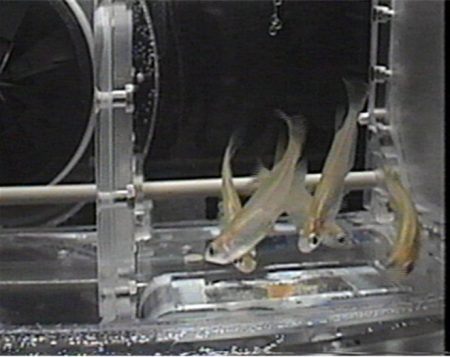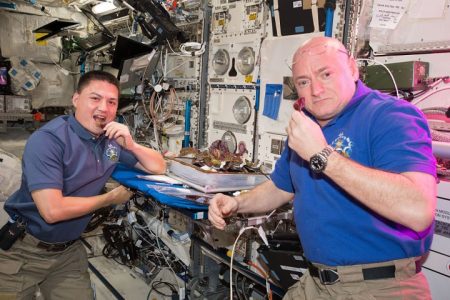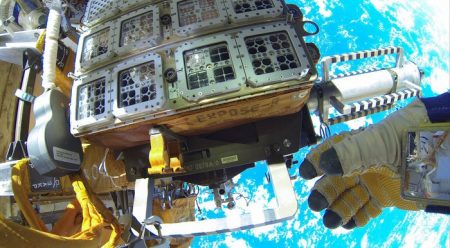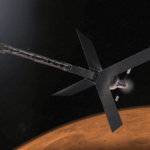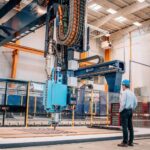January 17, 2017 – NASA is experimenting with growing edible plants in space. The first vegetables have already been harvested from the Veggie Plant Growth System on the International Space Station (ISS). Lettuce plants grown in 2010 were picked and frozen to return to Earth to see if space provided a safe environment for food production. Space farming is seen as a necessary technological advancement if humans are to travel to Deep Space destinations like near-Earth asteroids or inhabit the surface of Mars.
For this purpose NASA’s Veggie uses a “cut-and-come-again” technique to repeatedly harvest leaves from edible plants while leaving the core intact. This allows for continuous regeneration of the plant and harvests every 10 days.
Seeds used are contained in what is described as pillows. Each pillow includes seed, fertilizer and nutrients sufficient to produce a crop. Right now the ISS farm is small but NASA anticipates incorporating entire modules dedicated to growing food crops.
But how much lettuce can a crew eat before the novelty and lack of vegetable and fruit varieties wears thin?
What is in the works to introduce space-grown animal protein? We know that human bodies are affected by the micro gravity of space. Bones get thinner. Muscle mass is lost. Our circulatory systems get lazy and our heads swell. Would the same thing happen to animals we bring into space?
Humans have been putting animals into space since the dawn of the Space Age. Russia’s first space traveler was a dog. Since then the menagerie has included chimpanzees, worms, ants, honey bees, fruit flies, crickets, butterflies, spiders, mollusks, frogs, mice, rats, and even a quail. The latest Japanese experiment has brought fish to the ISS for testing how they react to micro gravity. A school of Medaka, a small freshwater fish common to Japan’s rice paddies, was sent to live on board. These Medaka were special, genetically modified to make two different cell types glow when exposed to different wavelengths of light. In their natural state Medaka are as transparent as glass. I remember having a small school of them in a fish tank when I was younger. You could see their skeletons and internal organs as they swam around in the tank.
The ISS Medaka were remotely observed from the Tsukuba Space Center in Japan. The tank in which they lived was bathed in two different fluorescent lights to observe cell behaviour. The two cells studied began to multiply at faster rates than observed on Earth. The explanation, the Medaka contained genes that expressed themselves differently when exposed to micro gravity. The changes happened almost instantaneously The observations are reported in a new study which you can read in Scientific Reports.
Another experiment begun in 2014 had Russia deliver to the ISS a European Space Agency module called Expose-R2. It contained 46 living species of plant and animal life from bacteria, algae, fungi, lichens, and mosses, to archaea (i.e., amoebae) and arthropods. The module was left outside the ISS for 18 months. the object was to learn the effect of cosmic and solar radiation as well as the vacuum of space on terrestrial life. Within the module a pressurized chamber simulated conditions at the Martian surface. Expose-R2 returned to Earth in June of last year.
The Medaka on board ISS were not meant to be a food source. And neither have any of the other animals brought aboard on human space missions. And the initial study on the changes in Medaka physiology present a problem for NASA, other space agencies and commercial space operators who plan for permanent human occupation of space. Aquaponics has been considered to be the solution to a space diet that would include animal protein. It would combine plants and fish in a closed environment. The system would produce food yielding plants at the top of the system, and food yielding fish from the bottom. But would this work in micro gravity? Based on the physiological changes to the Medaka on ISS we have a lot more to learn before we can successfully create a sustainable aquaculture as a food source for long-duration space missions.
Maybe NASA and others heading into space should consider growing meat protein in labs and serving hamburger on board.

